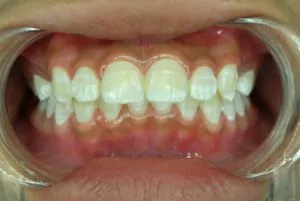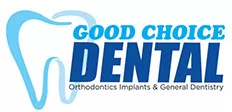Tooth decay is one of the most widespread dental health issues faced by people of all ages. But what are the 4 causes of tooth decay? Understanding them is important for anyone who wants to keep a healthy smile and prevent dental problems in the future.
In this article, we will look into the main causes of tooth decay, delve into how they affect your teeth, and provide practical advice on how to prevent and manage dental decay effectively.
What Is Tooth Decay?

When left untreated, tooth decay progresses to affect deeper layers of your teeth, causing discomfort, tooth sensitivity, and even tooth loss.
At the heart of tooth decay is the interaction between four key causes. Let’s start by exploring them in detail.
What Are The 4 Causes Of Tooth Decay?
Understanding what can cause tooth decay is a powerful step towards taking control of your oral health. By recognising these key factors, you can confidently adopt habits that prevent tooth decay and keep your smile healthy for years to come.
1. Bacteria In Your Mouth
Your mouth is home to various bacteria, some of which are beneficial and others are not. The harmful bacteria feed on food particles, especially sugars, and produce acids as a byproduct. These acids attack your tooth enamel, the protective outer layer of your teeth.
The constant acid attack begins to wear down the enamel, leading to the early stages of tooth decay. If this process continues unchecked, the acid can penetrate deeper into the tooth surface and reach the tooth root, causing more serious damage.
2. Sugary Foods And Drinks
Sugary foods and drinks are a primary fuel source for the harmful bacteria in your mouth. When you consume great amounts of sugary foods or sugary drinks, these sugars combine with bacteria to form dental plaque, a sticky film that clings to your teeth.
The bacteria within this plaque convert the sugars into acids that erode the enamel. Frequent consumption of sugary items increases acid production and heightens the risk of developing dental decay.
3. Poor Oral Hygiene
Poor oral hygiene allows dental plaque to accumulate on your teeth. If plaque isn’t removed regularly, it hardens into tartar, which is much harder to get rid of and harbours more bacteria.
Plaque tends to collect, especially around the gum line, chewing surfaces, and between teeth, areas that can be difficult to clean thoroughly. This build-up increases the risk of tooth decay and receding gums.
4. Reduced Saliva Flow
Saliva is vital in maintaining oral health because it helps neutralise acids, wash away food particles, and remineralise your teeth with naturally occurring minerals. When saliva production decreases, a condition known as dry mouth, your teeth become more vulnerable to decay.
Factors like certain medications, medical conditions, or eating disorders can reduce saliva flow, leading to a higher risk of tooth decay. Additionally, saliva supports the body’s natural repair processes, so reduced saliva can impair the repair of early tooth decay.
Tooth Decay Stages
Understanding the main stages of tooth decay can help you recognise the importance of early treatment. Tooth decay progresses through several stages:
Very Early Stages
In the tooth decay early stages, acid from bacteria begins to dissolve the minerals in your tooth enamel, creating white spots or areas of demineralisation. This stage may not cause any symptoms and can often be reversed with proper care.
Early Decay
As the decay progresses, the enamel breaks down further, leading to the formation of small cavities or holes in the tooth surface. You might start to notice tooth sensitivity or mild discomfort at this stage.
Advanced Decay
When decay reaches the deeper layers beneath the enamel, such as the dentin, it causes increased sensitivity and pain. If untreated, it can infect the blood vessels and nerves inside the tooth, leading to severe tooth pain and sometimes the formation of a tooth abscess.
Severe Decay And Tooth Loss
At this stage, the decay causes significant damage to the tooth structure, potentially leading to broken teeth or tooth loss. Immediate tooth decay treatment is crucial to prevent further complications.
Risk Factors That Influence Tooth Decay
Your likelihood of developing dental caries is influenced by various factors, each playing a unique role in how tooth decay can develop and progress.
Understanding these risk factors empowers you to take targeted steps to protect your smile effectively.
 Tooth Location
Tooth Location
The position of your teeth can affect their vulnerability to decay. Back teeth, or molars, naturally have more grooves, pits, and chewing surfaces where food particles and dental plaque tend to accumulate.
These textured areas are harder to clean thoroughly, making molars more prone to developing decay compared to smoother front teeth.
Children’s Teeth
Children’s teeth, especially baby teeth, are more susceptible to tooth decay because of their thinner enamel and developing structure.
One common concern is baby bottle tooth decay, which occurs when infants are frequently exposed to sugary liquids in bottles, especially at bedtime. This condition highlights the importance of early preventive care and good oral hygiene habits from a young age.
Dental Devices
Orthodontic devices such as braces or removable appliances like dentures can present additional challenges for maintaining oral hygiene.
These devices create extra surfaces where plaque can build up, making cleaning more difficult and increasing the risk of tooth decay if care routines are not carefully followed.
Receding Gums
The tooth roots become exposed as gums recede with age or due to gum disease. Unlike enamel, tooth roots are covered by a softer tissue called cementum, which is much more vulnerable to acid attacks and bacterial invasion.
This exposure raises the risk of developing decay along the gum line, emphasising the need for attentive care in these areas.
Worn Fillings And Rough Edges
Teeth with worn fillings or rough edges can create small crevices that trap harmful bacteria and food debris. These irregular surfaces are more difficult to clean thoroughly, providing ideal spots for decay to develop unnoticed.
Regular dental check-ups can identify and handle these areas before they contribute to further tooth damage.
How To Avoid Tooth Decay
Fortunately, with the right approach, you can lower the risk of having a decayed tooth. Here’s how you can stop tooth decay and keep your smile healthy.
Maintain Good Oral Hygiene
Brushing with fluoride toothpaste and flossing help get rid of plaque and food particles. Pay special attention to the gum line and chewing surfaces where plaque tends to accumulate.
Sugar-free gum after meals might also increase saliva production, aiding natural repair and cleansing.
Regular Dental Check-Ups
Visiting your dentist regularly allows for the early detection and management of tooth decay. During check-ups, your dentist can apply fluoride treatments or recommend periodic fluoride treatments to strengthen your enamel.
Your dental professional will also assess for any signs of untreated tooth decay, tooth abscess, or other issues requiring prompt tooth decay treatment.
Dietary Choices
Reducing your intake of sugary foods and sugary drinks is vital. Instead, focus on a balanced meals rich in whole foods.
Drinking fluoridated water also supports oral health by providing a steady supply of fluoride, a naturally occurring mineral that helps protect teeth.
Manage Dry Mouth
If you experience dry mouth, discuss it with your dentist or healthcare provider. They can suggest ways to stimulate saliva flow or recommend products that help maintain moisture in your mouth.
Protect Your Teeth
If you have broken teeth, worn fillings, or dental devices, your dentist may recommend repairs or adjustments to reduce areas where plaque can collect and cause further damage.
Tooth Decay Treatment Options
Thanks to ongoing advances in dental care, managing tooth decay today is both more effective and accessible than ever before.
Early detection and timely treatment allow you to protect your smile and maintain long-term oral health. Here are some of the most common and trusted treatment options available:
Dental Fillings
For many cases of tooth decay, dental fillings are a highly effective solution. Once the decayed portion of the tooth is carefully removed, the cavity is filled with durable materials.
This process restores the tooth’s shape and function while preventing further decay in the affected area.
Fluoride Treatments
Fluoride treatments are a gentle yet powerful way to reinforce your tooth enamel, helping to stop tooth decay before it progresses further.
These treatments involve applying concentrated fluoride directly to the teeth, which promotes remineralisation and makes the enamel more resistant to acid attacks from harmful bacteria and sugars.
Root Canal Procedure
A root canal therapy may be necessary when decay makes it to the deeper layers of the tooth, affecting the pulp and blood vessels. This treatment removes infected tissue inside the tooth, cleans and disinfects the canals, and seals them to prevent further damage.
A root canal procedure preserves the natural tooth, alleviates discomfort, and helps maintain your bite and oral function.
Tooth Extraction
In advanced or severe cases where the rotten tooth is extensively damaged and cannot be restored, tooth extraction may be the best available option to halt the spread of infection to neighbouring teeth or surrounding tissues.
After extraction, your dental professional can discuss options for replacing the missing tooth to maintain your oral health and function.
Frequently Asked Questions
How often should I see a dentist for check-ups?
Generally, every six months, but your dentist may recommend more frequent visits based on your oral health.
Is tooth sensitivity always a sign of decay?
Not always, but tooth sensitivity can be an early indicator of enamel wear, receding gums, or early tooth decay. If sensitivity persists, it’s important to get it checked so your dentist can determine the cause and recommend appropriate care.
Are baby teeth really important if they fall out anyway?
Yes, every baby tooth is essential for speech, eating, and guiding the proper development of adult teeth. Baby bottle tooth decay and other forms of dental decay in children can affect the health of children’s teeth and their long-term oral development.
Conclusion

Regular dental care, balanced nutrition, and proactive hygiene habits empower you to protect your teeth for life. Remember, your dentist is your partner in oral health, so follow their advice and enjoy the confidence of a healthy, beautiful smile.
Whether you’re experiencing early signs of decay or simply want to protect your smile for the future, our friendly team is here in Burwood to help.
Book your dental appointment today with Good Choice Dental at (02) 8203 8760 and take the first step towards a healthier, stronger smile.
Note: Any surgical or invasive procedure carries risks. Before proceeding, you should seek a second opinion from an appropriately qualified health practitioner.
Sources
Healthdirect Australia. Tooth Decay [Internet]. Healthdirect. 2023 [cited 2025 May 21]. Available from: https://www.healthdirect.gov.au/tooth-decay
Mandal A. Causes of Tooth Decay [Internet]. News Medical. 2023 [cited 2025 May 21]. Available from: https://www.news-medical.net/health/Causes-of-Tooth-Decay.aspx
Seladi-Schulman J. The Stages of Tooth Decay: What They Look Like [Internet]. Healthline. 2020 [cited 2025 May 21]. Available from: https://www.healthline.com/health/dental-and-oral-health/tooth-decay-stages
Gurarie M. How To Prevent Cavities—Plus, Risk Factors To Know [Internet]. Health. 2025 [cited 2025 May 21]. Available from: https://www.health.com/how-to-prevent-cavities-8788402


 Tooth Location
Tooth Location


Recent Comments